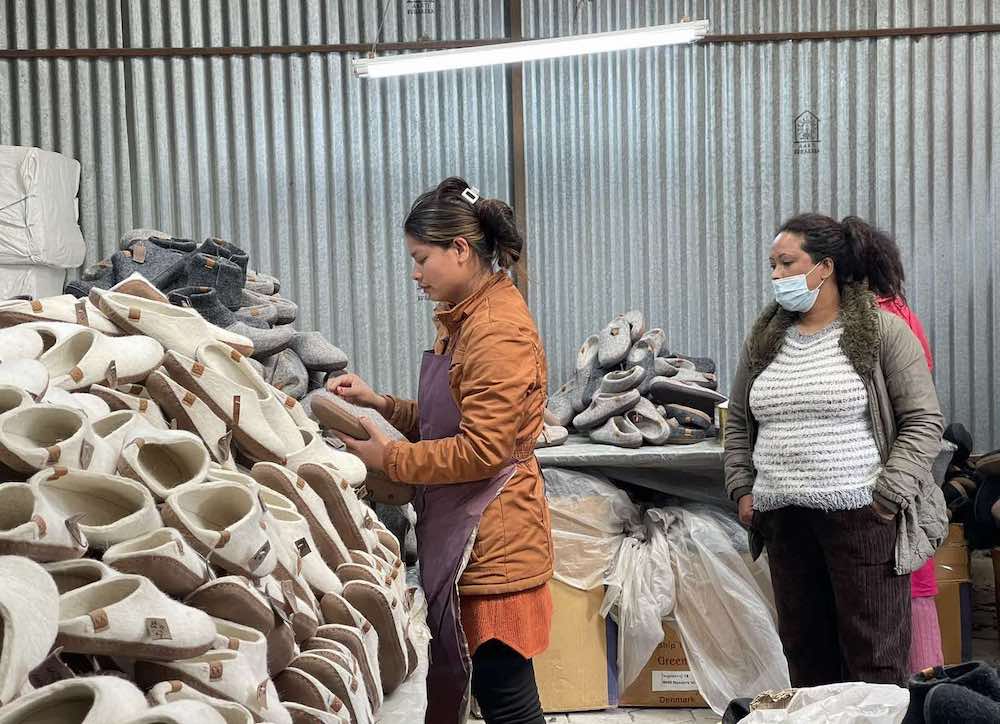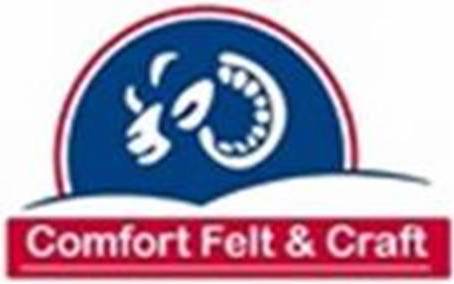Interview With Anup Manadhar | Chairman at Comfort Felt and Craft. Nepal
Comfort Felt is legally registered and came into operation from 30-July-2014. Before that, I was engaged with a similar type of production unit/factory, where I have worked for more than 9 years. But I gained experience and ideas about felt production at the first time in one of the renowned Handicraft Organizations where various ranges of handcrafted products are manufactured.
I worked there for 4 years on various positions with different responsibilities. I first came to know about felt from that organization. That was totally new for me. But I really enjoyed and got excited to know and learn about the design and product flexibility of felt production.
1- First of all please let us know about Comfort Felt‘s history and it’s success story in the textile sector.
Our company was started with small capital around US $ 20,000 and by this time we have paid up capital of US $ 77,000 (on the base of current exchange rate). In the initial period, we did not have any direct customer. We were making premium quality and nice felt shoes from the beginning. Besides shoes, we also produce various other felt items. At the beginning, we used to work for other exporters but we did not get fair payment. But we had no choice during our struggling time.
Even though we work for local retailer shops, we did not get fair wages payment. We used to add extra cash from our company side while paying wages to our workers. Fortunately, we got an inquiry from one good customer from UK through our Facebook page. And that time we got small export order first time on 2015. Then slowly following days, we got other 2-3 customers including local customer.
On 2016 March we had meeting with our biggest Danish customer. That was our turning point. We do have link with that customer while I used to work on a previous company. Then on 2015 Christmas, I sent greetings where we got re-connected for business.
That customer asks for samples. After they received samples, we were invited to Denmark for a business meeting. When we are back to Nepal, we came along with small order. Again many other orders had been placed on the same year. Then every year till now, we are increasing our capacity, where all our production is sold to that customer. And our graph is increasing every year.
2- What is Comfort Felt range of products? And specification?
We are specialized on making woolen hand felted shoes. We have production of indoor (room) shoes with suede leather sole and also outdoor shoes with rubber outsole. We are making slippers, boots, long boots and also kids animal designs and plain shoes.
Besides we also make felt accessories, home decorative items like rugs and carpets, placemats, cushion covers, sofa throws etc and Christmas ornaments. But currently our production line is mainly for felt shoes.
3- How do you evaluate Felt Fabric manufacturing sector in Nepal and globally?
There is high potential and opportunity for felt manufacturing and export. Especially in Nepal, felt production is consider as small-scale production and mainly home-based. However we have around 30,000 to 35,000 worker are getting job from this felt manufacturing. There are tentatively 250 to 300 big and small factories making various felt items.
The estimated export from Nepal only is 40 Million USD in a year and this is increasing every year. Felt is categorized as one of the main sector of Export item where our country is earning foreign currency.
As labor cost is comparatively cheaper compared to other countries, we have a huge opportunity. That is why we have competitive price. On top of that, almost all the felt factories’ productions are handcrafted where numerous labors are involved due to which many families are dependent on this sector.
If we see globally, there is high demand of felt items including felt shoes. Even our neighboring country China is making mass production on felt shoes, but when we talk about handcrafted, we are still ahead in this sector.
When we talk about the pros and cons; Nepal has cheap labor and also mostly home-based worker where we can have massive production. As felt accessories, ornaments and most other items need to be handcrafted, this has given us more opportunities for us.
Design diversification, flexibility and increasing demand on felt production and felt items is plus point for us. We can make wide ranges of products from felt. But there is a limited supply of raw material (sheep wool) in Nepal. We have to import major volume of wool from a third country.
In Nepal we do not have such a mechanism/industry where we can shear and process raw wool. We import washed raw wool, then do carding and dying here. If we could use own domestic raw materials that is more beneficial to our farmers. As we are a landlocked country mostly we have to export by means of Air Freight, which is comparatively high. Our International airport is not feasible for big Cargo Airplanes.
All our export goods are transported/exported through passenger flights. Nepal do not have its own seaport. We need to depend on the Indian seaport for container shipment. This has increased the cost of land transport from Nepal to the Indian seaport. Hence export customer have to pay high freight cost.
4- What is a good felt fabric’s features and specification?
The quality of felt fabric depends upon this density and thickness. Normally in Nepal, we make felt by hand pressing. This is like non-woven. More we go on pressing, more the thickness stiffness increase while making felt sheet by hand. However, on an industrial scale, they make needle felt/needle punching fabric.
Main raw material for felt is sheep wool. But I have heard some other countries are also using other natural fibers like camel wool, even dog hair is also used.
As per my knowledge, China has huge production for felt fabric. India also produces needling punching felt fabric. Felt fabric can be made on various specifications with different densities and thicknesses. For clothing and garments, merino wool is suitable and better. Merino wool is very soft and they have high fiber length.
5- Could you please explain felt fabric production process for our readers in detail with pictures?
In the context of Nepal, we first do carding of washed raw wool and make balls. Then those balls of wool we send to dyeing if coloring is needed. During felting, we spread the wool fibers with different layers as per requirement. Then above the wool layer, we put net fabric to avoid the fibers moving away during felting process.
Then spreading hot water and soap, wool fiber is soaked and hand felting is done to make felt sheet. For shoes, the basic process is same. We make the socks with the help of templates by following same procedure. For the final finishing and shaping of shoes, we use shoes last to make felt shoe upper. This process is called wet felting.
There is also needling felting process where a felting needle is use to make design and shape of felt items. Making felt fabric on an industrial scale is also on the base of same technology.
6- How many percent of your products are exported to international markets and how many percent are used in Nepal’s local market? Where is your main export destinations and countries?
All our production is exported. Our main big market is Denmark. Our Danish customer makes sales to Scandinavian and other European countries. We sell very nominal quantity to local customer. Especially USA, Canada, and Europe are biggest markets for felt.
7- How do you evaluate 2023 year for the textile and Fabric sector?
Well! This year could be little down market because of the recession on US market. Same could be case for the European market especially because of Russia –Ukraine war. Here in Nepal, almost all factories and increasing their sales from past few years. So, for this year this is little unpredictable.
Even during the COVID-19 pandemic period, the sales figure on felt was not bad in the case of Nepal. For the overall fabric sector, it could be difficult to predict because of ongoing global issues and recessions.
8- let us know about your latest products, research and development, new investment and …
Currently, we have only one product line, and this is shoes. But we develop designs on new colors, styles, design patterns and this is as per the customer demand. We generally make customized designs. To make better productivity we use often do R&D and add some mechanisms on our production process.
We are planning and sourcing out if there is some mechanism to make the felting process more productive. That will be our new investment project. We always think and act accordingly to make the workplace more efficient even though this is purely a labor-based job.
9- Sustainability and recycling is an important subjects for textile manufacturers all around the world, what is Comfort Felt sustainability policy and what you did for this?
Talking about sustainability, we are always focused on this. That is why we are using alternative energy as solar power for our back up. We used to burn firewood at the starting phase to boil water, which we had replaced by an electric heat pump so that there is no environmental pollution. We also try to make by products from the wastage coming out during our production. Like small key rings from the wastage suede leather.
Besides that we are following the Fair Trade principles and ethics. Not only that, all our workers are paid on Salary Basis (13 months’ salary including one month for festival allowance) not less than Government Scale with many other social benefits. Our workers get 45 days paid maternity leave in case of child delivery/birth, 15 days paid mourning to leave in case of death of father/mother and around 25 days of festival leave in a year. Also, 1 day paid leave each month. If that paid leave are saved, the company will pay double cash salary for every single day.
The company provides meal facilities during extra working hours. Every extra working hour is paid in a ratio of 1:1.5 Besides all benefits, the company also pay an education allowance for the school child of every worker US $8 for one kid each month, maximum 2 kids in a month. We have an inclusive workplace for disabled workers as well. We have 3 disabled people working with us, 2 with hearing impairment and 1 with a physically low height.

10- At the end you can add any other information that you think is interesting for readers in EMEA region and a better interview.
Felt business in Nepal is very popular and has more potential on the current period. Many people are investing and starting felt manufacturing businesses. This can be started with a small scale with a small amount of capital. But the interesting fact is, directly or indirectly many people get employment opportunities in this sector. Almost all the production of felt items from Nepal is exported to a third country.
This sector has been one of the major economic activities for our nation. We do not have such huge industrial type of felt factories where we make felt fabric. But the different felt accessories, ornaments and many other things are made in huge volumes with huge economic transactions.





































